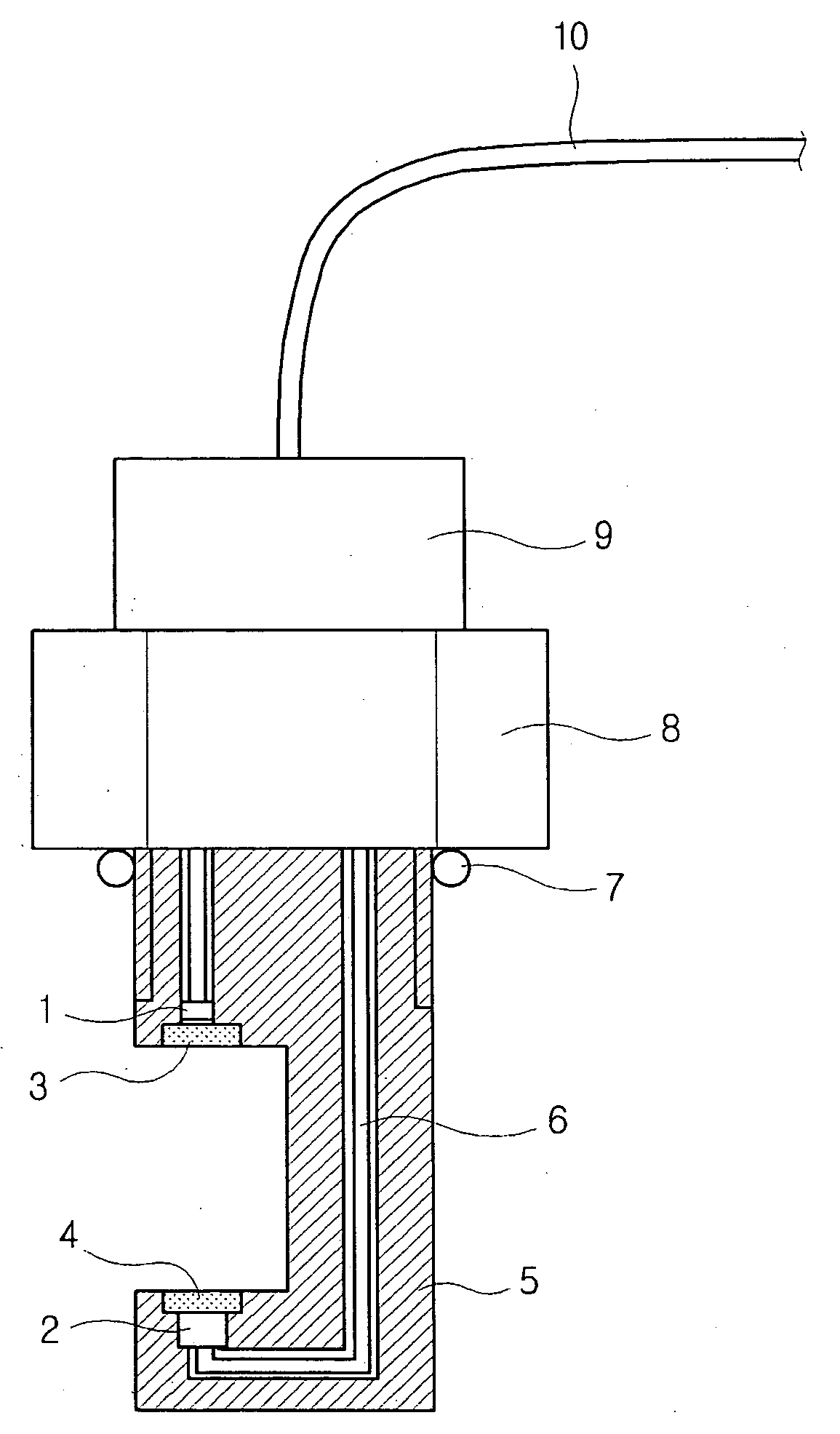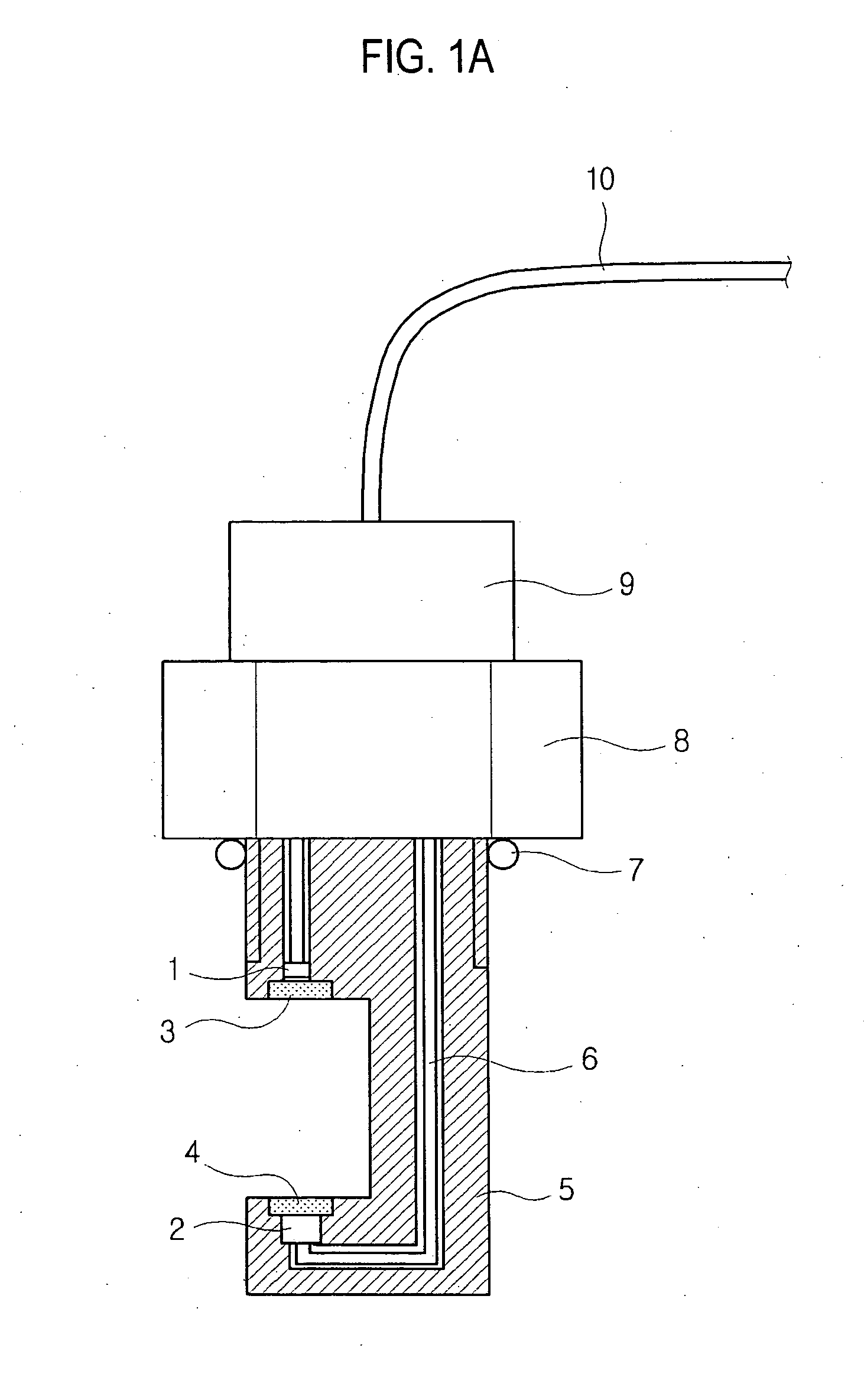Method and apparatus for monitoring oil deterioration in real time
a technology of oil deterioration and monitoring equipment, applied in the field of monitoring equipment for oil deterioration in real time, can solve the problems of lubricant deterioration, loss of lubricating effect, and high temperature of lubricant, and achieve the effect of reducing the risk of contamination, and reducing the safety of oil deterioration
- Summary
- Abstract
- Description
- Claims
- Application Information
AI Technical Summary
Benefits of technology
Problems solved by technology
Method used
Image
Examples
Embodiment Construction
[0041]Hereinafter, exemplary embodiments of the present invention will now be described in detail with reference to the accompanying drawings, wherein like elements are denoted by like reference numerals.
[0042]FIGS. 1A and 1B illustrate two exemplary apparatuses for monitoring oil deterioration according to the embodiments of the present invention. FIG. 2 shows the monitoring apparatus mounted inside of an oil tank.
[0043]The apparatus of the present invention for monitoring oil deterioration in real time includes a light source unit and a color sensing unit. An oil to be monitored is placed between the light source unit and the color sensing unit. In the embodiment of FIG. 1A, the light source unit and the color sensing unit are disposed vertically against the wall of an oil container. In the embodiment of FIG. 1B, the light source unit and the color sensing unit are disposed horizontally against the wall of an oil container.
[0044]The light source unit includes a light emitter 1 and...
PUM
 Login to View More
Login to View More Abstract
Description
Claims
Application Information
 Login to View More
Login to View More - R&D
- Intellectual Property
- Life Sciences
- Materials
- Tech Scout
- Unparalleled Data Quality
- Higher Quality Content
- 60% Fewer Hallucinations
Browse by: Latest US Patents, China's latest patents, Technical Efficacy Thesaurus, Application Domain, Technology Topic, Popular Technical Reports.
© 2025 PatSnap. All rights reserved.Legal|Privacy policy|Modern Slavery Act Transparency Statement|Sitemap|About US| Contact US: help@patsnap.com



